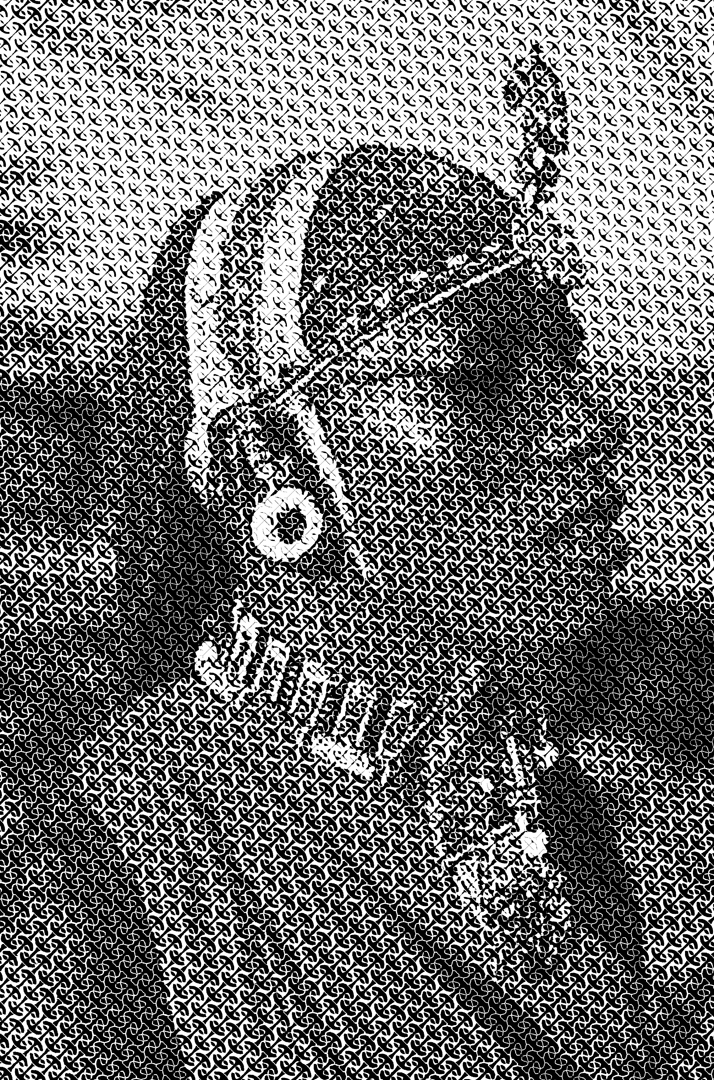“Reproducing color images with embedded metallic patterns” by Hersch, Collaud and Emmel
Conference:
Type(s):
Title:
- Reproducing color images with embedded metallic patterns
Presenter(s)/Author(s):
Abstract:
By combining a metallic ink and standard inks, one may create printed images having a dynamic appearance: an image viewed under specular reflection may be considerably different from the same image viewed under non-specular reflection. Patterns which are either dark or hidden become highlighted under specular reflection, yielding interesting visual effects. To create such images, one needs to be able to reproduce at non-specular reflection angles the same colors, by standard inks alone or in combination with a metallic ink. Accurate color prediction models need to be established which model the underlying physical phenomena in a consistent manner. To meet this challenge, we propose two models, one for predicting the reflection spectra of standard inks on coated paper and one for predicting the reflection spectra of a combination of standard inks and a metallic ink. They are enhancements of the classical Clapper-Yule model which models optical dot gain of halftone prints by taking into account lateral scattering within the paper bulk and multiple internal reflections. The models we propose also take into account physical dot gain and ink spreading for standard inks as well as the low reflectance of metallic inks at non-specular reflection angles and the poor adherence of standard inks printed on top of a metallic ink (trapping effect). These models open the way towards color separation of images to be reproduced by combining a metallic ink and standard inks. Several designs printed on an offset press demonstrate their applicability and their benefits for high-end design and security applications.
References:
1. CLAPPER, F. R. and YULE J. A. C 1953. The effect of multiple internal reflections on the densities of halftone prints on paper. Journal of the Optical Society of America, Vol. 43, 600–603.Google ScholarCross Ref
2. COOK, R. L. and TORRANCE, K. E. 1982. A Reflectance Model for Computer Graphics. ACM Trans. on Graphics, Vol. 1., Nol. 1, 7–24. Google ScholarDigital Library
3. DEMICHEL, M. E. 1924. Procédé, Vol. 26, 17–21.Google Scholar
4. ERSHOV, S., KOLCHIN, K., and MYSZKOWSKI, K. 2001. Rendering Pearlescent Appearance Based on Paint-Composition Modelling. Proc. Eurographics 2001, special issue of Computer Graphics Forum, Vol. 20, No. 3.Google ScholarCross Ref
5. HE, X. D., TORRANCE, K. E., SILLION, F. X. and GREENBERG, D. P. 1991. A Comprehensive Physical Model for Light Reflection. In Computer Graphics (Proc. of ACM SIGGRAPH’91), Vol. 25, No. 4, ACM, 175–186. Google Scholar
6. HECHT, E. 1974. Schaum’s Outline of Optics, Mc-Graw-Hill.Google Scholar
7. INOUE, S, TSUMARA, N., and MIYAKE Y. 1997. Measuring MTF of Paper by Sinusoidal Test Pattern Projection. Journal of Imaging Science and Technology, Vol. 41, Nol. 6, 657–661.Google Scholar
8. JUDD, D. B. 1942. Fresnel reflection of diffusely incident light. Journal of Research of the National Bureau of Standards, Vol. 29, 329–332.Google ScholarCross Ref
9. KANG, H. R. 1994. Applications of color mixing models to electronic printing. Journal of Electronic Imaging, Vol. 3, No. 3, 276–287.Google ScholarCross Ref
10. KANG, H. R. 1997. Color Technology for Electronic Imaging Devices. SPIE Optical Engineering Press, 1997.Google Scholar
11. KERN, G. M., MICALE, J., LAVELLE, S. and VALENZUELA P. 1991. Hiding power of aluminium pigments in printed ink films. American Ink Maker, vol 69, no 10, 60–68.Google Scholar
12. KIPPHAN, H. 2001. Handbook of Print Media. Springer-Verlag.Google Scholar
13. KUBELKA P. 1954. New contributions to the optics of intensely light-scattering material, part II: Non-homogeneous layers. Journal of the Optical Society of America, Vol. 44, 330–335.Google ScholarCross Ref
14. NEUGEBAUER, H. E. J. 1937. Die theoretischen Grundlagen des Mehrfarbendrucks. Zeitschrift fuer wissenschaftliche Photographie, Vol. 36, 36–73, reprinted in Neugebauer Seminar on Color Reproduction, SPIE Vol-1184, 1989, 194–202.Google Scholar
15. OSTROMOUKHOV, V. and HERSCH, R. D. 1995. Artistic Screening. Proc. of ACM SIGGRAPH 1995, ACM Press, Computer Graphics Proceedings, Annual Conference Series, 219–228, 1995. Google Scholar
16. Press, W. H., FLANNERY, B. P., TEUKOLSKY, S. A. and FETTERLING, W. T. 1992. Numerical Recipes. Cambridge University Press, 2nd edition.Google Scholar
17. ROGERS, G. 2000. A Generalized Clapper-Yule Model of Halftone Reflectance. Journal of Color Research and Application, Vol. 25, No. 6, 402–407.Google ScholarCross Ref
18. SAUNDERSON, J. L. 1942. Calculation of the color pigmented plastics. Journal of the Optical Society of America, Vol. 32, 727–736.Google ScholarCross Ref
19. STANTON, A. and RAENCIC, G. 2001. Ink Trapping and Colorimetric Variation. Proc. TAGA 2001, 258–281.Google Scholar
20. STOLLNITZ, E. J., OSTROMOUKHOV, V. and SALESIN, D. 1998. Reproducing Color Images Using Custom Inks. Proc. of ACM SIGGRAPH 1998, ACM Press, in Computer Graphics Proceedings, Annual Conference Series, 267–274. Google Scholar
21. WARD, G. 1992. Measuring and modeling anisotropic reflection. In Computer Graphics (Proc. of ACM SIGGRAPH 92), Vol. 26, No. 2, 1267–274. Google Scholar
22. WILLIAMSON, J. S., BARNABY, G. V., and DOUGHTY, G. V. 1994. US patent 5, 370, 976, Metallic Color Printing Process, issued Dec 6, 1994, see section “Background of the invention”.Google Scholar
23. WYBLE, D. R. and BERNS, R. S. 2000. A Critical Review of Spectral Models Applied to Binary Color Printing. Journal of Color Research and Application, Vol. 25, No. 1, 4–19.Google ScholarCross Ref
24. YULE, J. A. C. and NIELSEN, W. J. 1951. The penetration of light into paper and its effect on halftone reproductions. Proc. TAGA, Vol. 3, 65–76.Google Scholar




